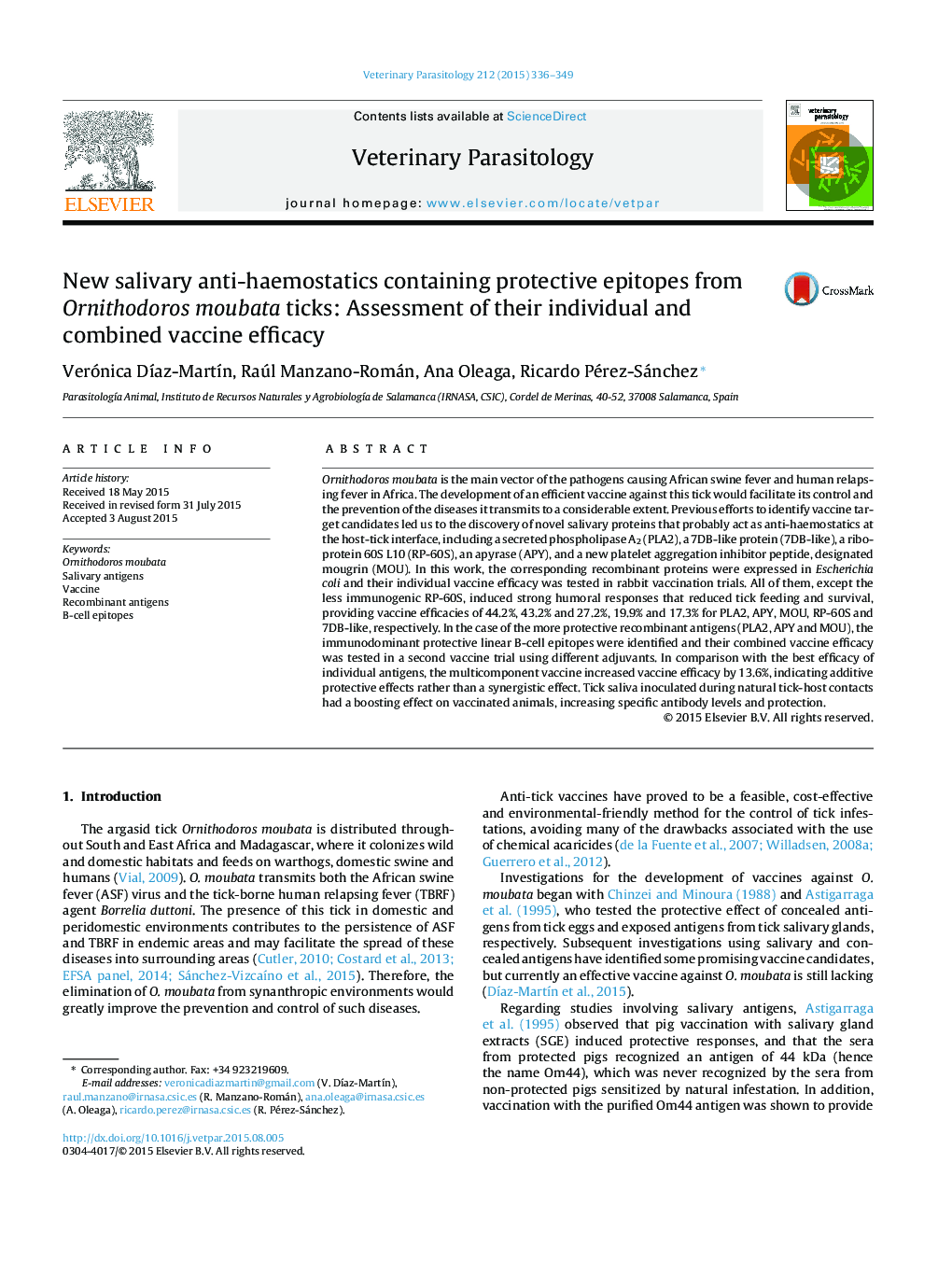| Article ID | Journal | Published Year | Pages | File Type |
|---|---|---|---|---|
| 5802371 | Veterinary Parasitology | 2015 | 14 Pages |
â¢Five new recombinant salivary anti-haemostatics from O. moubata were tested as vaccine antigens.â¢Recombinant PLA2, APY and MOU induced valuable protective responses.â¢Joint administration of these three protective antigens increased vaccine efficacy.â¢Tick infestations boost protection by acting as natural re-vaccination events.
Ornithodoros moubata is the main vector of the pathogens causing African swine fever and human relapsing fever in Africa. The development of an efficient vaccine against this tick would facilitate its control and the prevention of the diseases it transmits to a considerable extent. Previous efforts to identify vaccine target candidates led us to the discovery of novel salivary proteins that probably act as anti-haemostatics at the host-tick interface, including a secreted phospholipase A2 (PLA2), a 7DB-like protein (7DB-like), a riboprotein 60S L10 (RP-60S), an apyrase (APY), and a new platelet aggregation inhibitor peptide, designated mougrin (MOU). In this work, the corresponding recombinant proteins were expressed in Escherichia coli and their individual vaccine efficacy was tested in rabbit vaccination trials. All of them, except the less immunogenic RP-60S, induced strong humoral responses that reduced tick feeding and survival, providing vaccine efficacies of 44.2%, 43.2% and 27.2%, 19.9% and 17.3% for PLA2, APY, MOU, RP-60S and 7DB-like, respectively. In the case of the more protective recombinant antigens (PLA2, APY and MOU), the immunodominant protective linear B-cell epitopes were identified and their combined vaccine efficacy was tested in a second vaccine trial using different adjuvants. In comparison with the best efficacy of individual antigens, the multicomponent vaccine increased vaccine efficacy by 13.6%, indicating additive protective effects rather than a synergistic effect. Tick saliva inoculated during natural tick-host contacts had a boosting effect on vaccinated animals, increasing specific antibody levels and protection.
Graphical abstractDownload high-res image (165KB)Download full-size image
